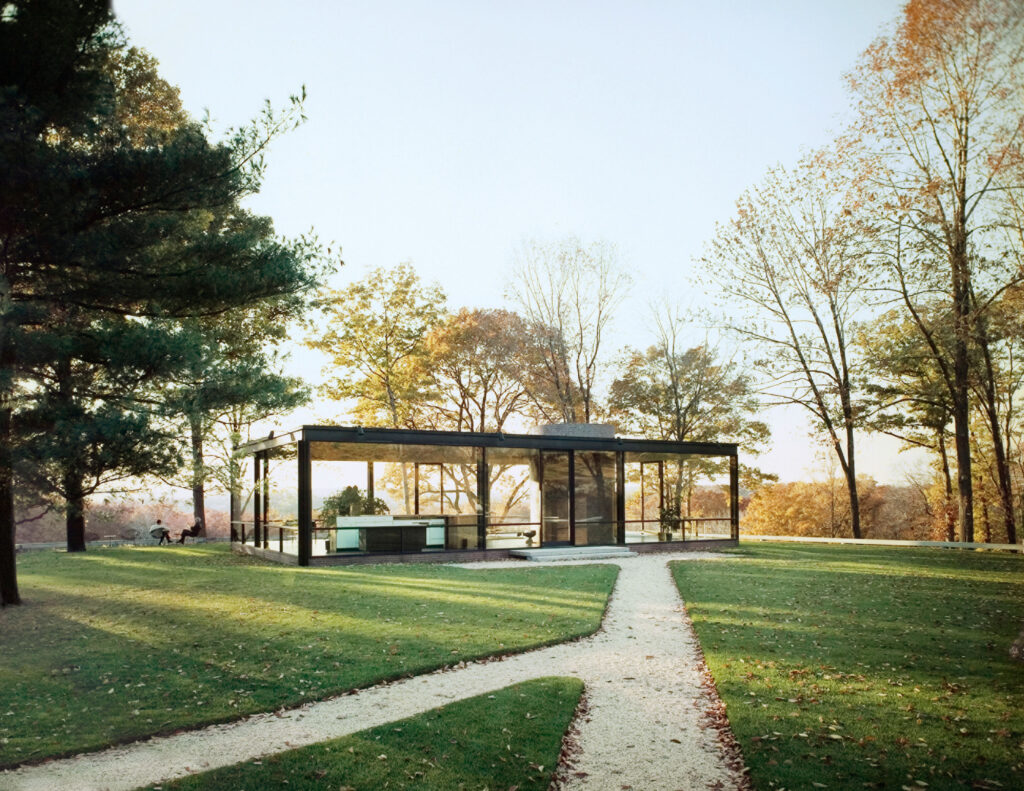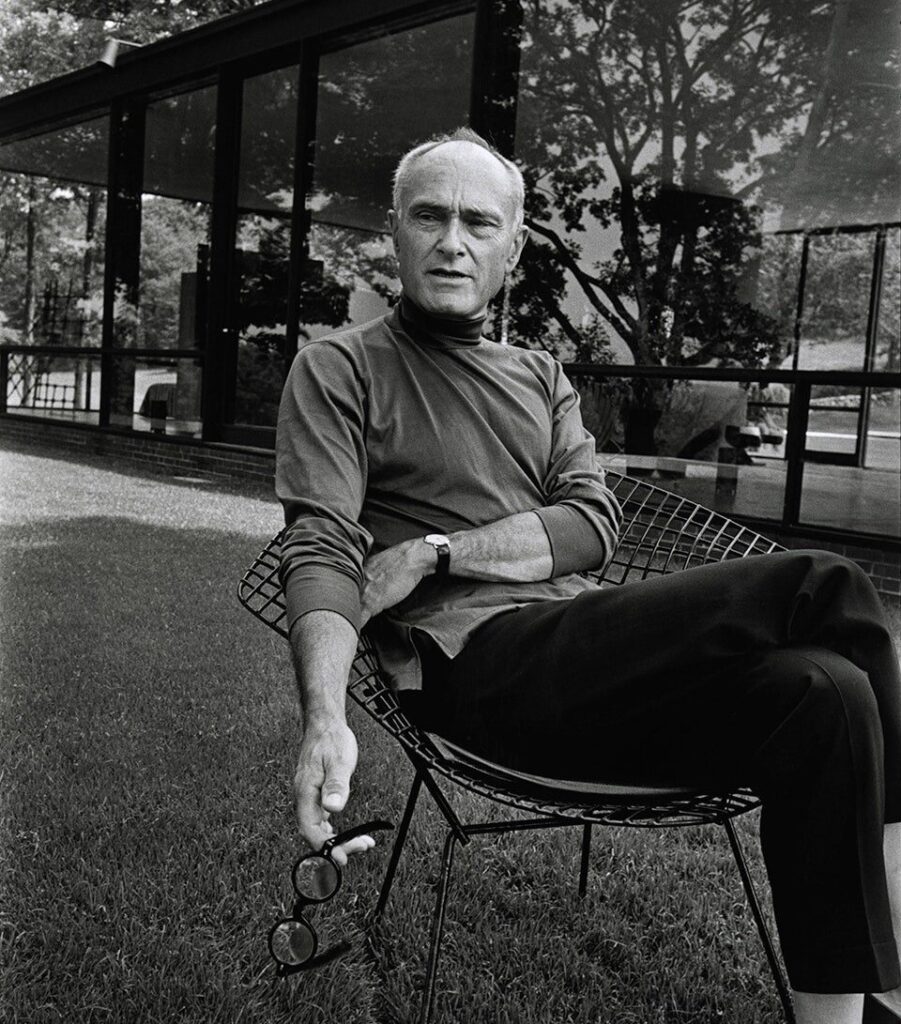
The Glass House was a residential project designed by Philip Johnson and built during 1948-1949. Strikingly modern for its time, the Glass House utilizes industrial materials and enveloped on all sides by glass walls. The design was influenced by Mies van der Rohe’s Farnsworth House, as Johnson had featured the house in an exhibit he curated at the Modern Museum of Art just a few years earlier. Raised 10 inches off the ground, the house is a 56-foot by 32-foot open plan design with privacy reserved for the bathroom enclosed by brick. Walnut cabinets divide up the rest of the space. The rest of the property features several other modern buildings added by Johnson in the years following the Glass House’s construction including the Brick House, the Painting Gallery, the Kirsten Tower, the pavilion, the sculpture gallery, and the study. Upon his death, Johnson left the entire property to the National Trust for Historic Preservation.

